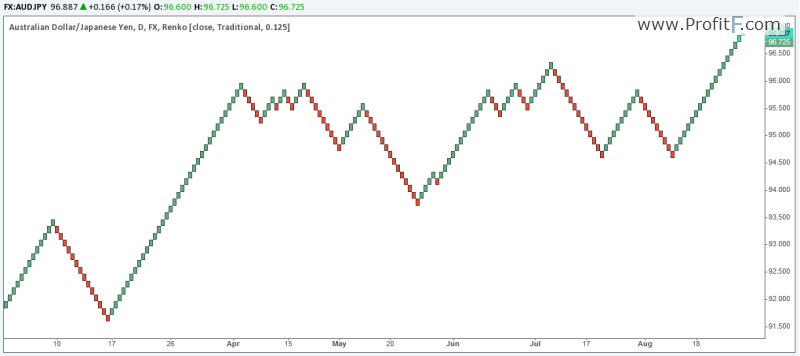How to Use Renko Bricks and Moving Averages to Find Trades
Post on: 12 Июнь, 2015 No Comment

Talking Points
- Renko bars help filter the noise Renko bars reveal clearer entries and exits Moving Averages can be used with Renko bars with some minor setting changes to pinpoint entries.
Seeing the t rend without Forex market noise is the goal of every trader. Too many times, traders get head-faked by the twists and turns of price action. I described in my previous article, Trading Trends with Renko Charts that traders can filter out the whipsaws and intra-market volatility to reveal trend direction.
In addition moving averages can be used to signal entries and exits as well. A couple of settings have to be changed in order to get the moving averages which are usually tied to time, to work with a chart system that is based on price.
First of all, Renko is a custom indicator that you have to download from FXCodebase.com. Here are simple steps you can follow to install the file called Renko2.lua. Once you have installed the indicator, you can choose it from the indicator menu. Set the Step in pips to 5 and choose the hourly time frame.
Note that since Renko bars are not time dependent, the time frame just dictates how many bars are loaded on the screen. The larger the time frame, the more Renko bricks will be displayed.
To add a 13-period exponential moving average to the Renko chart, choose EMA from the Add Indicator menu then change Number of periods to 13. Next, click the Data Source tab and highlight Close under the Renko menu then click OK
Learn Forex: GBPUSD Renko Chart with Moving Average
(Chart Created using Marketscope 2.0 charts)
Notice the chart above which displays both Renko bars and a 13-period exponential moving average. A simple system can be built around the Renko bars and the moving average. When Renko price bars cross below the moving average and turns red, traders can enter short and stay with the trend until the Renko bars cross back above the moving average.
An initial stop could be placed just above the last blue Renko brick. Keep in mind that in the above example, each brick is equal to five pips. In the above example, the red circles mark where the Renko bars crossed below the moving average. A trader can see that a number of pips could have been gathered as the bars stayed below the moving average.
On the other hand, when the Renko bars change color and cross above the moving average, traders can enter long placing stop just below the last red Renko brick. The above chart shows in the green circles, points were the Renko price bars moved above the moving average generating a clear buy signal.
Renko charts. without th e dimension of time, may take a little time to get used to. But once you get the hang of them, you may find it difficult to go back to the volatility illustrated by candles. Adding a moving average gives excellent signals for entry and exit. Marrying them up with other indicators can magnify the benefits of trading without noise and scary wicks!
— Written by Gregory McLeod, Trading Instructor
This article showed you could use Renko charts and moving averages together to enter and exit trades. If you are brand new to Forex trading or need a review, enroll now in a free New to FX trading course. A short 20-minute review of the basics may be all you need to get your trading back on track!
DailyFX provides forex news and technical analysis on the trends that influence the global currency markets.
Learn forex trading with a free practice account and trading charts from FXCM.














